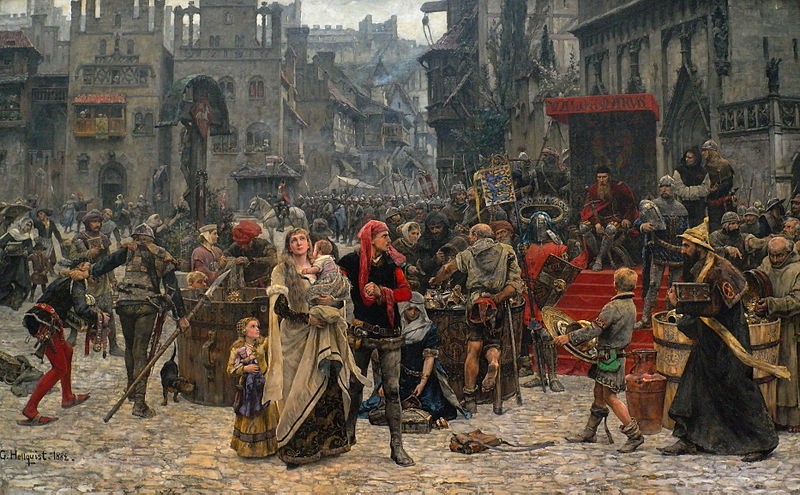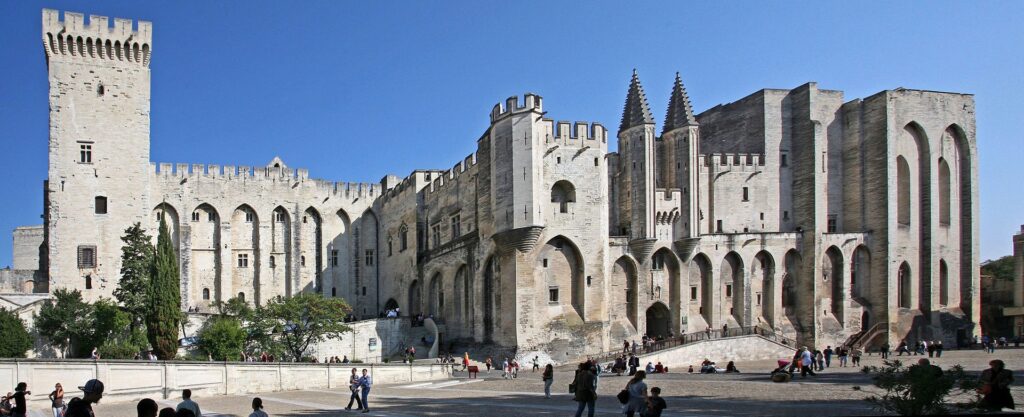By Stefan Pajung & Mihkel Mäesalu
It is well-known that the Danish king Valdemar Atterdag sold Estonia to the Teutonic Order in 1346. But did he ever have plans to reclaim Estonia afterwards? When Danish historian William Mollerup wrote his book on Denmark’s relationship with Livonia in 1880, he categorically denied that such plans existed, and for many years this conclusion was accepted. But in the 1970’ties a few dissenting voices began to doubt Valdemar’s disinterest in reclaiming his former possession. In the mid-1970’s, Estonian-Swedish émigré and historian Hain Rebas noted in his work on Late Medieval Baltic Policy that Swedish historian Gunnar Fritzell had told him, that he was working on a paper on Valdemar’s plan of reconquering Estonia, but this remained unpublished at the time of Fritzell’s death in 1982. The possibly of Valdemar wanting to regain Estonia has also been hinted at by Danish historian Jens E. Olesen, but without him providing any substantial evidence.
We were intrigued – could we dig up some evidence to support this bold claim? Or was it that bold? Valdemar Atterdag was known to never give up on anything that he thought belonged to the royal house of Denmark. Very soon, a document showed up. Valdemar actually had made a first effort in 1355 to regain Estonia by trying to persuade the pope to annul the sale of Estonia, but Innocent VI declined. Valdemar then concentrated his efforts on uniting the divided Danish provinces under his scepter, defeated all those that stood in his way and punished those that would not accept his rule severely. Slowly, he pushed the mortgagees out of their possessions and in 1360 he even reconquered Scania, Halland and Blekinge from king Magnus Eriksson of Sweden, even though he had made a treaty with him, in which Valdemar gave his acceptance of Swedish rule over the provinces. Only a year later, Valdemar launched in invasion fleet against Gotland – the important Hanseatic outpost in the middle of the Baltic – and conquered the island. Why was that? Did Valdemar want a base for an assault on Estonia?

Carl Gustav Hellquist: Valdemar Atterdag holding Visby to ransom, 1361. Oil on canvas, 200 x 330 cm, 1882. Nationalmuseum, Stockholm, Sweden. Wikimedia Commons.
If king Valdemar indeed had had ideas to crown his own efforts of reuniting the Danish realm by reclaiming the Duchy of Estonia immediately after the conquest of Gotland in 1361 – which would have provided him with an excellent base, if he were to send a fleet to Livonia – then these plans would have to wait. By conquering Gotland and the city of Visby he had enraged the merchants of the Hanseatic League, who had substantial interests invested in the Baltic trade. They simply could not accept such a blatant assault on a fellow member of the League, and by taking control over Gotland Valdemar now also controlled a vital staging post for the important Baltic trade. Thus, they allied themselves with the King of Sweden, who was not happy about losing Scania, Halland and Blekinge (for which he had made enormous economic sacrifices) and now also Gotland – and the counts of Holstein, who were somewhat anxious to see king Valdemar’s power grow to such an extent that he would be able to exert immense influence in the region and effectively decide all disputes to his pleasing – if need be, by force. The conflict evolved into a war, which lasted until a truce was agreed upon in 1362, which lasted until January 1364.
But Valdemar was not idle during the truce. Before it expired, he left Denmark for a tour of Europe, where he formed several defensive alliances, thus achieving some notable diplomatic victories. He gained support from the Polish king, the Emperor and even the Teutonic Order – Valdemar was a not only a well-connected, but also an astute and opportunistic king. This he demonstrated during his final visit of the tour – he went to the pope in Avignon.

Here he engaged in what we deem to be signs of long-term political planning. On the surface it looked as if Valdemar just applied for and secured various appointments to high church offices in order to reward his loyal chaplains, advisors and chancellors with good positions at various cathedral chapters all over Scandinavia, Northern Germany and Livonia. But was there a deeper meaning behind the posts he asked for? I would like to argue that his new approach was a more subtle attempt by the Danish king to gain and exercise influence in the various towns than by blunt force. Among the first to be so rewarded were several clerics from the dioceses of Reval, Dorpat and Ösel.
It could be argued that providing these clerics with well-placed canonries was well thought through. Valdemar rarely did something without gaining something himself. In Avignon, he also secured positions within the cathedral chapters of Lübeck, Schwerin and Rostock for clerics that had previously been in his service, while also doing favors for the bishop of Lübeck. This could be seen as a method to indirectly gain influence in precisely those Hanseatic cities that he presently was at war with, or at least to have a source of information from within those towns. Many of those that Valdemar provided with new positions were however also related to the most important families that regularly provided town councilors and thus shaped the policy of the town.
It might thus have been part of a long-term plan to strengthen his own position in Estonia that he specifically advanced Estonian clerics and put them in a position of power all over Estonia, not only in the territories of the former Duchy, but within the bishoprics of Dorpat and Ösel as well. Taking Estonian clerics into his service in the first place, and then also securing for these clerics an office and an income must have brought king Valdemar a lot of good-will among the families of the clerics. But who were these families in the first place? Were they people of importance and influence? If so, this was perhaps Valdemar’s plan – gaining support from within before making a move against Livonia?
We will have to find out whether this was Valdemar’s plan!


